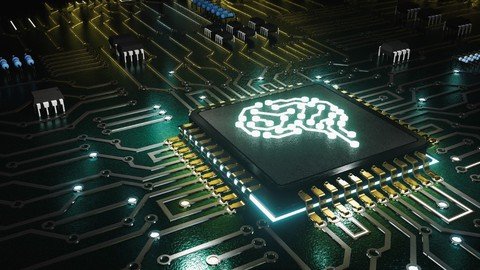Udemy – Natural Language Processing NLP With Transformers in Python

MP4 | Video: h264, 1280×720 | Audio: AAC, 44.1 KHz
Language: English | Size: 3.61 GB | Duration: 11h 27m
What you’ll learn
Industry standard NLP using transformer models
Build full-stack question-answering transformer models
Perform sentiment analysis with transformers models in PyTorch and TensorFlow
Advanced search technologies like Elasticsearch and Facebook AI Similarity Search (FAISS)
Create fine-tuned transformers models for specialized use-cases
Measure performance of language models using advanced metrics like ROUGE
Vector building techniques like BM25 or dense passage retrievers (DPR)
An overview of recent developments in NLP
Understand attention and other key components of transformers
Learn about key transformers models such as BERT
Preprocess text data for NLP
Named entity recognition (NER) using spaCy and transformers
Fine-tune language classification models
Requirements
Knowledge of Python
Experience in data science a plus
Experience in NLP a plus
Description
Transformer models are the de-facto standard in modern NLP. They have proven themselves as the most expressive, powerful models for language by a large margin, beating all major language-based benchmarks time and time again.
In this course, we cover everything you need to get started with building cutting-edge performance NLP applications using transformer models like Google AI’s BERT, or Facebook AI’s DPR.
We cover several key NLP frameworks including:
HuggingFace’s Transformers
TensorFlow 2
PyTorch
spaCy
NLTK
Flair
And learn how to apply transformers to some of the most popular NLP use-cases:
Language classification/sentiment analysis
Named entity recognition (NER)
Question and Answering
Similarity/comparative learning
Throughout each of these use-cases we work through a variety of examples to ensure that what, how, and why transformers are so important. Alongside these sections we also work through two full-size NLP projects, one for sentiment analysis of financial Reddit data, and another covering a fully-fledged open domain question-answering application.
All of this is supported by several other sections that encourage us to learn how to better design, implement, and measure the performance of our models, such as:
History of NLP and where transformers come from
Common preprocessing techniques for NLP
The theory behind transformers
How to fine-tune transformers
We cover all this and more, I look forward to seeing you in the course!
Who this course is for:
Aspiring data scientists and ML engineers interested in NLP
Practitioners looking to upgrade their skills
Developers looking to implement NLP solutions
Data scientist
Machine Learning Engineer
Python Developers
Homepage
https://www.udemy.com/course/nlp-with-transformers/
Download From hot4share.com
Download From hot4share.com
Download From hot4share.com
Download From hot4share.com++++++++++++++++++++++++++